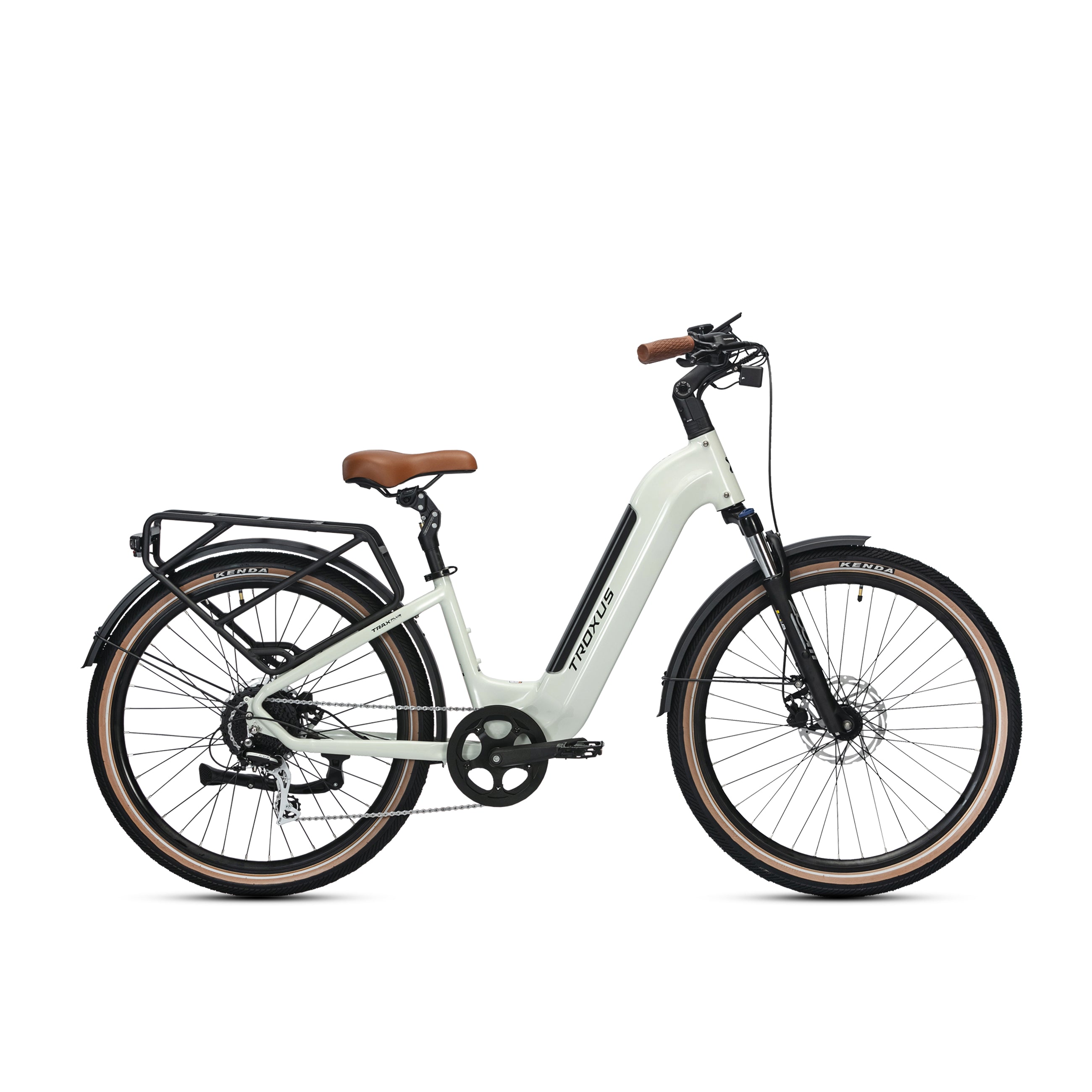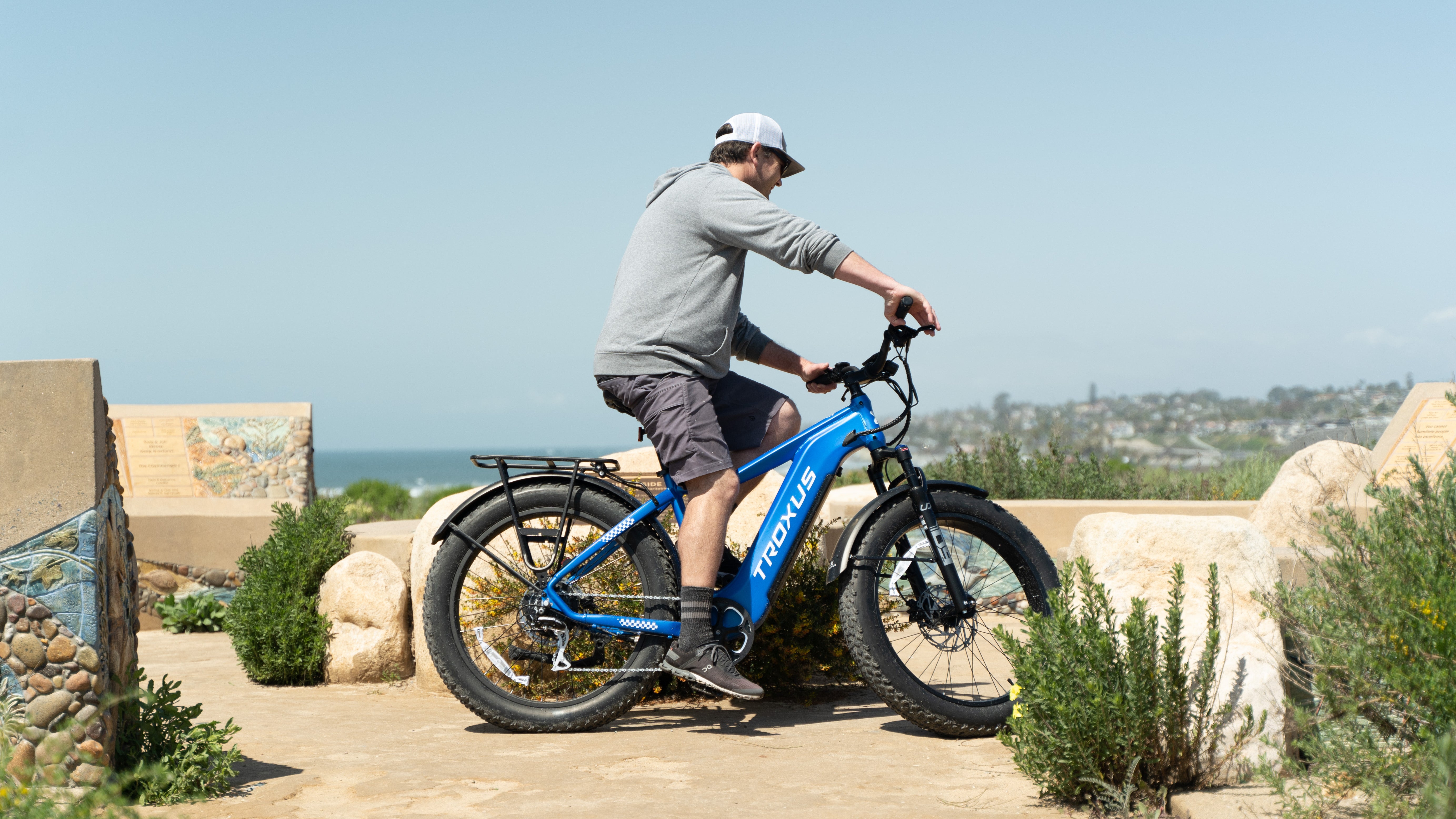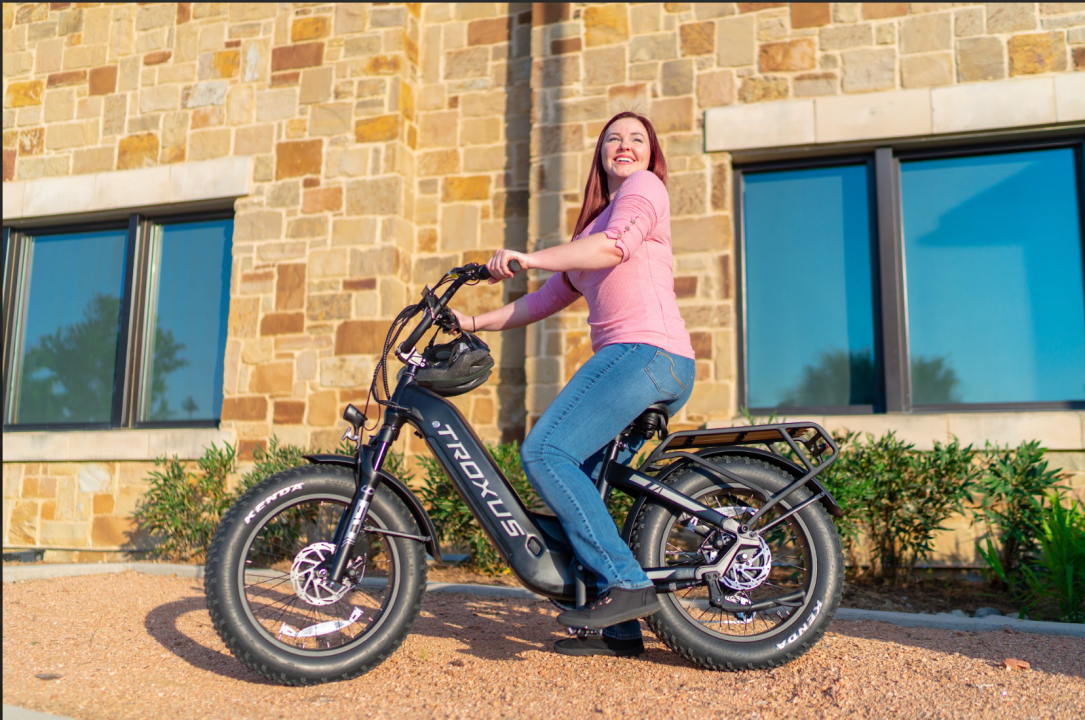When it comes to electric bicycles, one of the key decisions you must make is choosing a mid-drive motor or a hub motor. Both options have their advantages and considerations, and the choice depends on your specific needs and preferences. Let's explore the differences between mid-drive and hub motors:
Hub E-bike Motor
Hub e-bike motors are integrated into the wheel hub. When the rider pedals or uses the throttle, the motor draws power from the battery to generate torque, propelling the wheel and providing assistance. The motor control system adjusts power based on rider settings and conditions. Hub motors offer direct propulsion, simplifying the mechanical system by eliminating extra gears. They provide a reliable and straightforward riding experience.

Pros and Cons of Hub E-Bike Motors
Pros of Hub E-Bike Motors:
- Simple Installation: Hub motors are relatively easy to install, making them popular for aftermarket e-bike conversions or DIY projects.
- Low Maintenance: Hub motors have fewer moving parts compared to mid-drive motors, resulting in lower maintenance requirements. They generally require less frequent adjustments and servicing.
Cons of Hub E-Bike Motors:
- Limited Torque and Power: Hub motors generally provide less torque and power compared to mid-drive motors. It can reduce performance when climbing steep hills or navigating challenging terrains.
- Weight Distribution: Hub motors add weight to the wheel, which can negatively impact the overall weight distribution of the bike. It may decrease maneuverability and handling, especially in certain riding conditions.
- Limited Gear Range: Hub motors typically operate at a fixed gear ratio, which can limit the available gear range for the rider. It may be less of an issue for riders who ride on flat terrain.
- Heat Build-Up: Hub motors can generate more heat during prolonged use, potentially reducing efficiency and performance. Adequate cooling measures or heat dissipation systems may be necessary to mitigate this issue.
- Complex Wheel Maintenance: In the case of rear hub motors, repairing or replacing a flat tire or performing routine wheel maintenance can be more challenging due to the integrated motor.
Mid-drive E-Bike Motor
A mid-drive e-bike motor, also known as a central motor or crank motor, is a type of electric motor positioned near the bike's bottom bracket, where the pedals and crankset are located. It works with the bike's gears to provide power and assist the rider during cycling.
How Mid-Drive E-Bike Motors Work

Mid-drive e-bike motors near the bottom bracket connect to the pedals and crankset. They use a battery for power and interact with the bike's gears and pedal sensors. As the rider pedals, the sensors detect input and inform the motor control unit. The control unit calculates assistance based on the rider's pedaling and selected power mode. The motor delivers torque to the drivetrain, providing electric service aligned with the rider's effort and gear selection. This integrated system enhances power, efficiency, and control, making mid-drive motors famous for different terrains and customizable rides.
Pros and Cons of Mid-Drive E-Bike Motors
Pros of Mid-Drive E-Bike Motors:
- Better Torque and Power: Mid-drive motors leverage the bike's gears, providing higher torque and power compared to hub motors. It makes them well-suited for climbing steep hills or tackling challenging terrains.
- Efficient Power Delivery: By working with the bike's gears, mid-drive motors can operate within their optimal RPM range, resulting in improved energy efficiency and potentially longer battery life.
- Balanced Weight Distribution: Placing the motor near the bike's bottom bracket helps maintain a balanced weight distribution, enhancing handling, stability, and overall ride quality.
- Responsive Assistance: Mid-drive motors incorporate pedal sensors that detect the rider's pedaling input, allowing for more responsive and intuitive electric assistance that aligns with the rider's effort.
- Independent of the Wheel: Unlike hub motors, mid-drive motors are positioned near the bottom bracket of the bike frame, separate from the wheel. This design allows more accessible access to the tire and wheel without needing to navigate around the motor. It simplifies tire changes, tube replacements, and general wheel maintenance.
Cons of Mid-Drive E-Bike Motors:
- Higher Cost: Mid-drive e-bike systems are more expensive than hub motor systems. The added complexity and functionality contribute to the increased cost.
- Maintenance Requirements: Due to their involvement with the drivetrain components, mid-drive motors may require more frequent maintenance. It includes chain lubrication, gear adjustment, and periodic inspections.
- Potential Drivetrain Strain: The additional power and torque provided by mid-drive motors can strain the bike's drivetrain components, mainly if the gears are not properly maintained, or the rider frequently shifts under heavy load.
Discover The Best Troxus E-Bike Options for You

Relish the peace of mind and exhilaration of a high-performance e-bike, courtesy of Troxus. The Explorer and Lynx e-bikes come with hassle-free hub motors that balance affordability and durability perfectly.
Explorer and Lynx have a 750W motor and fat tires, making them better for off-road riding. Each e-bike has safety features like headlights, front and rear fenders. They all feature a convenient rear rack for ample storage, allowing you to carry your belongings during your rides easily. Whether shopping, commuting or exploring, you can easily take what you need to make every ride more convenient and enjoyable.
The professional evaluation website, Electric Bike Report, spoke highly of the design process and performance of Explorer and Lynx. Their excellent quality and cost-effectiveness make them the first choice for the majority of cycling enthusiasts. Whether it's urban commuting or outdoor adventures, the Explorer and Lynx electric bikes give you a great riding experience. Read more about Lynx and Explorer.
Take advantage of this, book your test ride today, and experience it yourself.








